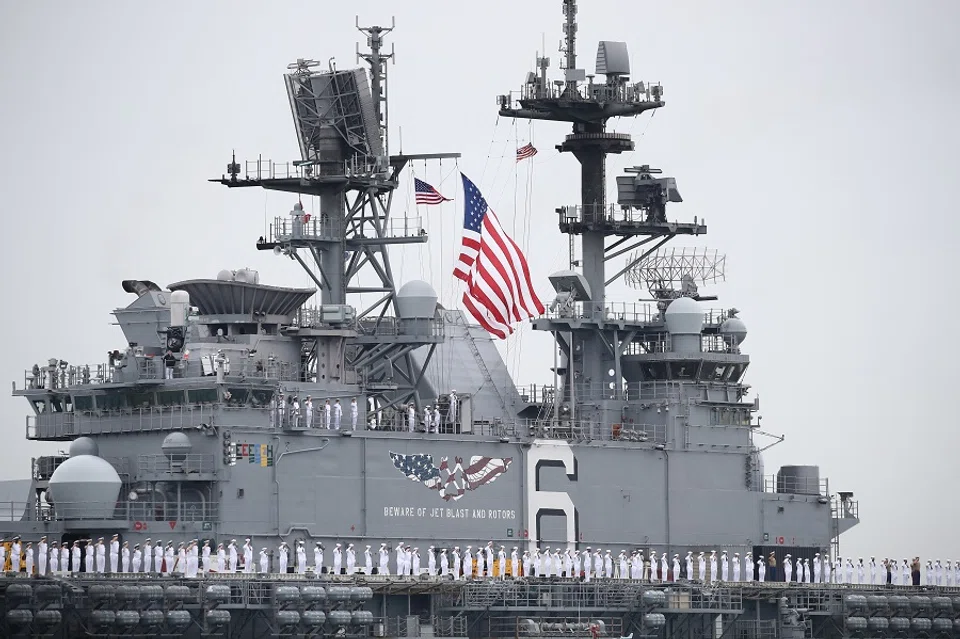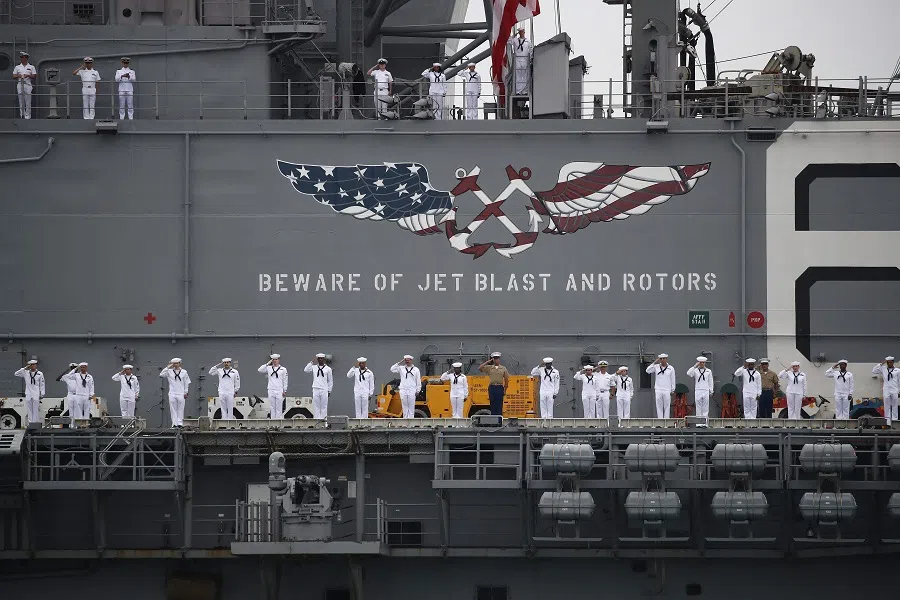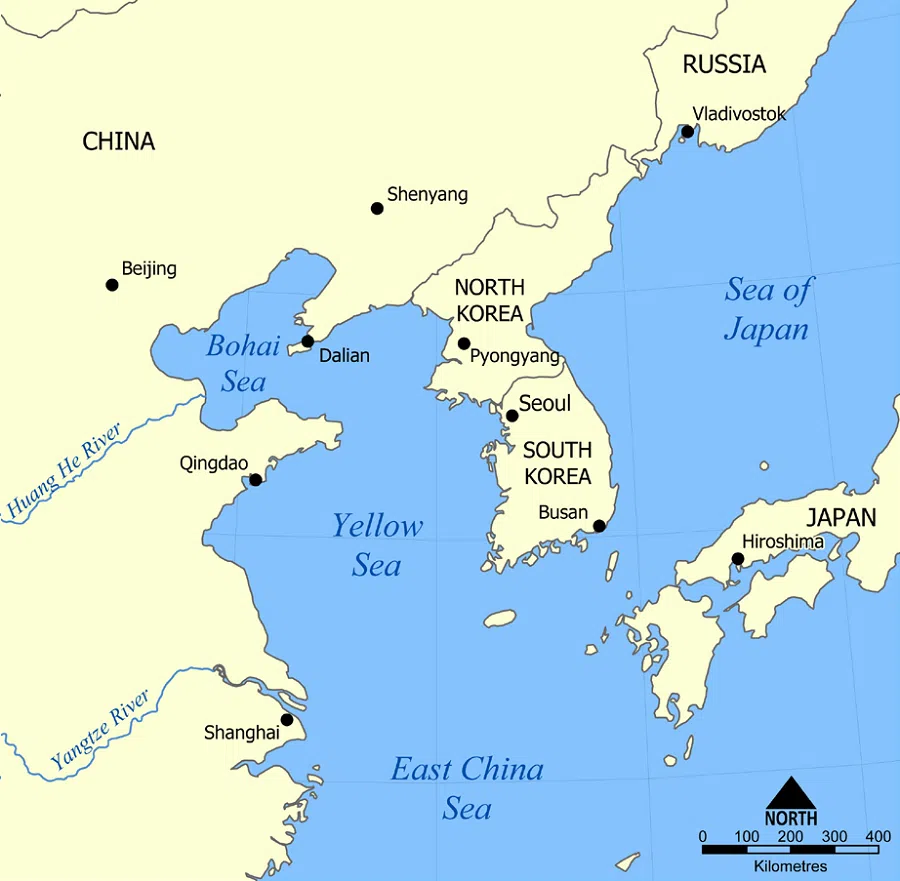US, China militaries flex muscles in Yellow Sea
Amid the ongoing US-China rivalry, both powers have been sending their navies on exercises in the Yellow Sea, as a signal to each side, stopping just short of actual engagement. This mirrors earlier near-confrontations. Is this all just military posturing ahead of a possible Xi Jinping-Joe Biden summit before the end of the year?

Since late August this year, tensions around the Korean peninsula have continued to rise. Two days after the conclusion of US-South Korea military exercises, North Korea fired several cruise missiles towards the Yellow Sea on 2 September. On 14 September, the US sent the amphibious assault ship USS America, also called a lightning carrier, to take part in the first large-scale military exercise in the past decade in the Yellow Sea alongside Canada and South Korea.
Response from China
With pressure from Western countries closing in, China has been on high alert and taken preemptive steps, drawing up a no-fly and no-shipping zone even before the arrival of US ships at the Yellow Sea. On 15 September, the Dalian Maritime Affairs Bureau announced that from 14 September 12am to 18 September 6pm, naval access to northern parts of the Yellow Sea, as well as parts of the Bohai Sea, would be prohibited, the third navigation warning issued in the ten days since the Chinese People's Liberation Army (PLA) conducted military exercises in the abovementioned naval regions.
China's Maritime Safety Administration subsequently released several navigation warnings; one stated that from 17 September 4pm, the PLA would commence a week-long military exercise on the northern waters of the Yellow Sea and the Bohai Strait, while another announced that on 18 September to 21 September, from 8am to 9pm, live firing at sea would take place in the southern waters of the Yellow Sea.
The Yellow Sea is in close proximity to China's political and economic centre...

The PLA has not conducted naval drills at the Yellow Sea in five months. This wave of frequent military action recently is in clear response to the large-scale amphibious landing joint exercises between the US, Canada and South Korea.
The Yellow Sea is in close proximity to China's political and economic centre; not only is it at the doorstep of the capital, at the heart of the Jingjinji Metropolitan Region (Beijing-Tianjin-Hebei) hinterland, it is also the strategic front of the Shandong and Liaodong peninsula, and is of key importance to the safety and strategic concerns of Beijing. In October 1994, the world was gripped by the military confrontation between China and the US in these waters.
Since 2013, in a bid to avoid eliciting an intense reaction from the Chinese military, the US Navy has not made a show of dispatching an aircraft carrier to the Yellow Sea...
Previous incidents
Back then, when North Korea restarted its nuclear reactor, the US Navy dispatched the USS Kitty Hawk battle group as a show of military force towards North Korea without informing China beforehand, patrolling along the borders of China's territorial waters. The Kitty Hawk began tracking operations as it was shadowed by a Chinese Han class nuclear-powered attack submarine which had just completed far-sea training, which sparked an aerial encounter between China and US fighter jets.

The confrontation lasted 72 hours, and was described as "the most explosive naval encounter the US Navy had in the western Pacific region since WWII". It spurred the Chinese and US navies to set up a marine navigation bilateral notification system and hastened the PLA's modification of submarines and research on military strategies on aircraft carriers, accelerating the rise of the PLA Navy in the western Pacific.
Subsequently, China and the US have had other brushes with each other in the Yellow Sea, such as in May 2009 when the USNS Victorious surveillance ship had a faceoff with Chinese fishing vessels. The last time US and South Korean navies held a large-scale joint exercise in the Yellow Sea was back in 2013, when the US Navy sent the USS George Washington carrier strike group.
Since 2013, in a bid to avoid eliciting an intense reaction from the Chinese military, the US Navy has not made a show of dispatching an aircraft carrier to the Yellow Sea, usually only sending a single vessel or a small group.

Ten years later, the US deployed the amphibious assault ship USS America to the Korean peninsula in the name of commemorating the 73rd anniversary of the Battle of Incheon during the Korean War and the 70th anniversary of the US-South Korea alliance. It also held a drill with the Canadian frigate HMCS Vancouver and the South Korean frigate ROKS Seoul in the Yellow Sea, to strengthen the joint warfare capability of the three navies in countering the North Korean threat.
It is not surprising that the PLA has drawn up a massive no-fly zone in the Yellow Sea and Bohai Sea to squeeze the manoeuvring space of the US, Canadian and South Korean navies.
Current moves
In April, the American and South Korean heads of state issued the Washington Declaration, a plan to enhance the US deployment of its conventional and nuclear assets in Korea, to strengthen deterrence against North Korea. The foray into the Yellow Sea by the US quasi-aircraft carrier and its allies not only strengthens the military deterrence against the west coast of North Korea, but also targets vital spots in China, demonstrating that the US Navy is still capable of projecting military power into China's coastal waters and the first island chain. It could also be intended to ramp up military surveillance and intelligence gathering in China's coastal waters; to some extent, this makes a repeat of the 1994 standoff possible.
It is not surprising that the PLA has drawn up a massive no-fly zone in the Yellow Sea and Bohai Sea to squeeze the manoeuvring space of the US, Canadian and South Korean navies. It is a common countermeasure that China has employed in recent years to express its dissatisfaction towards the US in the region, and could also be an effective measure to raise expectations between both militaries and avoid miscalculations.

The Global Times quoted Chinese military expert Zhang Junshe as saying that it is laughable to say that the US exercise in the Yellow Sea could deter China. He pointed out that any hostile target in the Yellow Sea would be sitting ducks for PLA air, maritime and ground fire, and that any maritime target would only be "living targets" for the PLA.
According to the Chinese internet, the USS America has reportedly left Incheon port and returned to its base in Sasebo, and the US-Canada-South Korea joint military drill is coming to an end.
The consequences of a military conflict between the two major powers of China and the US, should it happen, would be unbearable.
Where to go from here
Some analysts think that when the US-Canada-South Korea joint military drill began on 14 September, the Chinese Navy's Wuxi, a Type 055 destroyer, had returned to the East China Sea in defence via the Tsushima Strait, putting pressure on the USS America from behind. This, coupled with the PLA's swift announcement that it would be carrying out military exercises around the Yellow Sea and Bohai Sea, prompted the US Navy to turn back.
Notably, while the PLA definitely has the military capability to deal a heavy blow to US forces in coastal waters, it must be extremely cautious about firing the first shot. The consequences of a military conflict between the two major powers of China and the US, should it happen, would be unbearable.

Speaking at the United Nations General Assembly on 19 September, US President Joe Biden reiterated that the US seeks to responsibly manage the competition with China so it does not tip into conflict.
Amid their rivalry, China and the US have remained calm, and have avoided a repeat of the standoff in the Yellow Sea years ago. Hence, China and the US have remained on track for a second face-to-face meeting between its heads of state before the end of the year.
This article was first published in Lianhe Zaobao as "中美两军黄海斗法".
Related: Three trends in the PLA's military activities around Taiwan | Looking in the wrong direction: US Navy's superior strike capability does not ensure victory | China's latest military drones on display at Zhuhai Airshow | Why Kim Jong-un's first trip after the pandemic was not to China, but Russia | Instead of seeking support from others, Xi and Biden must meet again





![[Big read] China’s 10 trillion RMB debt clean-up falls short](https://cassette.sphdigital.com.sg/image/thinkchina/d08cfc72b13782693c25f2fcbf886fa7673723efca260881e7086211b082e66c)